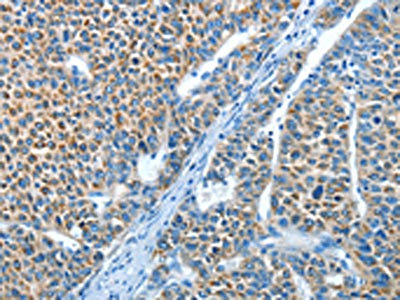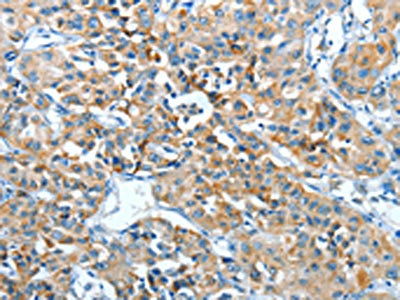
The image on the left is immunohistochemistry of paraffin-embedded Human liver cancer tissue using CSB-PA698673(ADRA1B Antibody) at dilution 1/25, on the right is treated with synthetic peptide. (Original magnification: x200)
ADRA1B Antibody

CSB-PA698673
ApplicationsWestern Blot, ELISA, ImmunoHistoChemistry
Product group Antibodies
ReactivityHuman
TargetADRA1B
Overview
- SupplierCusabio
- Product NameADRA1B Antibody
- Delivery Days Customer20
- ApplicationsWestern Blot, ELISA, ImmunoHistoChemistry
- CertificationResearch Use Only
- ClonalityPolyclonal
- ConjugateUnconjugated
- FormulationLiquid
- Gene ID147
- Target nameADRA1B
- Target descriptionadrenoceptor alpha 1B
- Target synonymsADRA1; adrenergic, alpha-1B-, receptor; alpha-1B adrenergic receptor; alpha-1B adrenoceptor; alpha-1B adrenoreceptor; ALPHA1BAR
- HostRabbit
- IsotypeIgG
- Protein IDP35368
- Protein NameAlpha-1B adrenergic receptor
- Scientific DescriptionAlpha-1-adrenergic receptors (alpha-1-ARs) are members of the G protein-coupled receptor superfamily. They activate mitogenic responses and regulate growth and proliferation of many cells. There are 3 alpha-1-AR subtypes: alpha-1A, -1B and -1D, all of which signal through the Gq/11 family of G-proteins and different subtypes show different patterns of activation. This gene encodes alpha-1B-adrenergic receptor, which induces neoplastic transformation when transfected into NIH 3T3 fibroblasts and other cell lines. Thus, this normal cellular gene is identified as a protooncogene. This gene comprises 2 exons and a single large intron of at least 20 kb that interrupts the coding region.
- ReactivityHuman
- Storage Instruction-20°C or -80°C
- UNSPSC12352203


